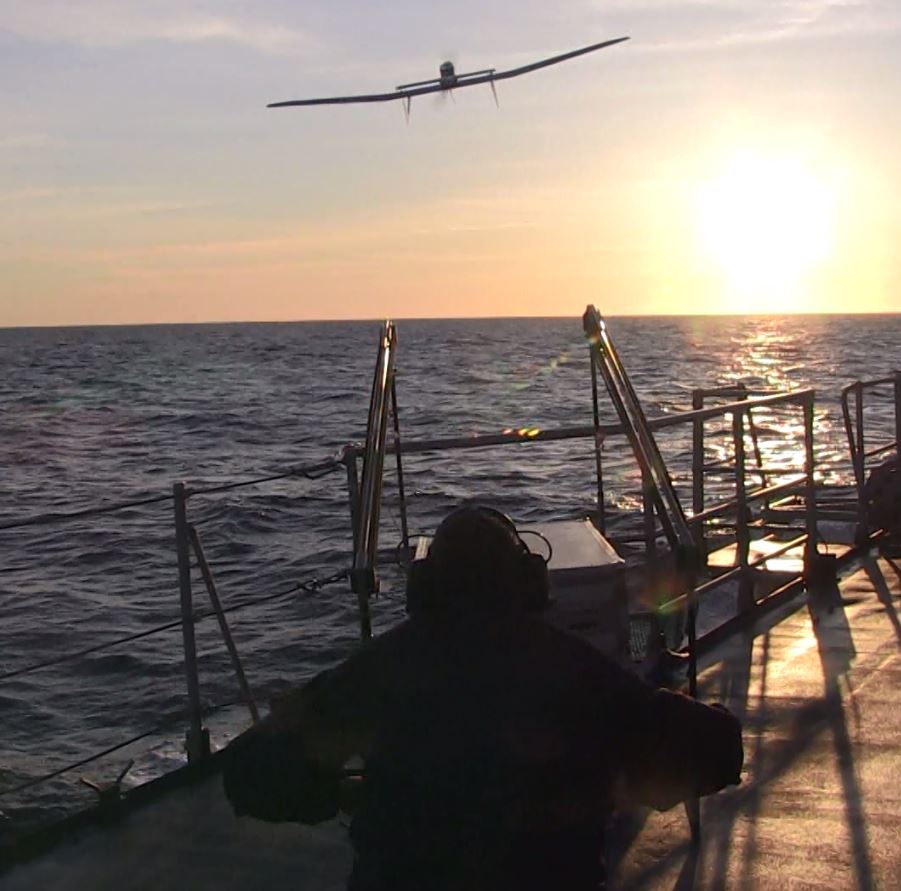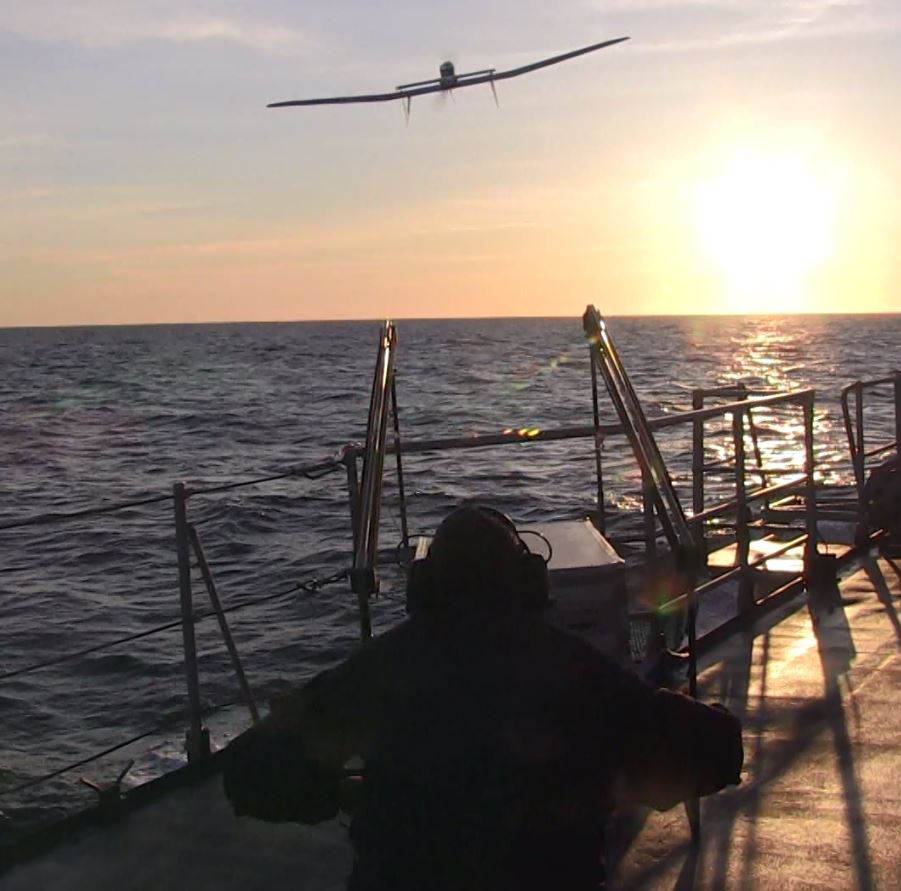
Airbus Defence and Space mini UAS subsidiary SURVEY Copter has signed a contract with the French DGA to provide the French Navy with 11 systems (22 aircraft) of the electrically powered fixed-wing ALIACA UAS (maritime version). Officially called “Systèmes de Mini Drones aériens embarqués pour la Marine” by the French authorities), the first deliveries are expected in 2021 and including training with integrated logistic support.
The ALIACA is a high endurance versatile system allowing up to three hour missions over a 50 km (27 Nm) range. It is perfectly adapted to maritime missions with high gyro stabilised EO/IR payload performances and qualified to operate in severe environmental conditions. Launched by catapult, the ALIACA concludes its flight by landing automatically using a dedicated net landing solution. With a length of 2,2m and a wingspan of 3,6m for a maximum take-off weight of 16 kg, the ALIACA benefits from a powerful yet silent electric motor. The system can be deployed easily and rapidly in less than 15 minutes by two operators only.
ALIACA UAS Roles
Similarly, the “user-friendly” ground control station enables the operator to constantly monitor the automatic flight of the UAS while receiving in real-time day and night images and Automatic Identification System data gathered by its on-board sensors.It is designed to conduct several types of missions around ships, including:
- increasing the understanding of the tactical situation
- control of illegal operations at sea
- search-and-rescue
- traffic monitoring
- pollution detection
- tracking of any suspicious behaviour
- coastal surveillance.
Jack Richardson

ALIACA UAS Ordered By France - European Security & Defence
France has ordered the ALIACA UAS from Airbus Defence & Space subsidiary SURVEY Copter to improve the French Navy's maritime situational awarenesss.
 euro-sd.com
euro-sd.com


